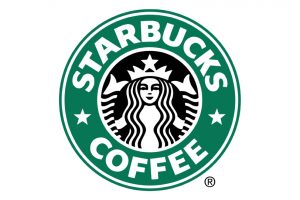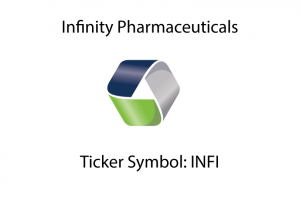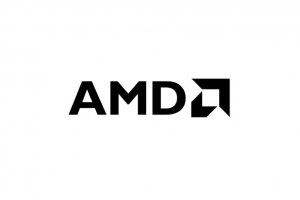 “Lower for longer”….that has been the oil mantra that has been in place ever since the “black gold, Texas tea” liquid was under the $30 per barrel mark. Sorry for the Beverly Hillbilly’s reference, but I just couldn’t help myself.
“Lower for longer”….that has been the oil mantra that has been in place ever since the “black gold, Texas tea” liquid was under the $30 per barrel mark. Sorry for the Beverly Hillbilly’s reference, but I just couldn’t help myself.
Since then oil has rebounded, almost doubling off its lows. But is oil at above $50 and closer to $60 sustainable? And at what cost do companies need barrels of oil to be in order to maintain their profitability? As automobiles continue to advance with the newest technologies, they have also become more fuel efficient. The greater fuel efficiency though has been typically offset by the increasing number of vehicles on the roads.
Building pipelines and decreasing regulations, that sounds like a ripe environment for increasing oil production here in the United States. What does increasing supply do to the oil market and prices? Ample supply helps to keep prices low. Making people “feel” richer always helps by keeping price at the pump low. Let’s see if the newly elected POTUS agrees.
Exxon Mobil (XOM) – 20 Year Chart
Let’s start big with Exxon Mobil (XOM). This 20 year chart has a long-term trendline that begins in 1996 and is just off the left side of the chart. This is XOM’s main supporting trendline. Unfortunately, Think or Swim only shows 20 years of chart history so I cannot show the beginning of the trendline. As of the close of the market on Friday, Exxon Mobil’s share price sits right on that 20 year trendline.
Approximately $3 below XOM’s current share price of $81.08 is a $78 pivot line. Look for initial support around the[s2If !current_user_can(access_s2member_level1)]….
If you want to continue reading this article for Exxon Mobil (XOM), you must first login. I review long-term downside price calculations for Exxon Mobil’s share price, calculated by Fibonacci Retracement and Extension Tools as well as trendlines.
If you are not a Trendy Stock Charts member, consider joining today! There are several different subscription plans available.[/s2If][s2If current_user_can(access_s2member_level1)] $78 price area. However, with increasing selling volume that started to take place in 2016 along with buying momentum on the MACD Histogram that has almost disappeared, XOM’s share price appears to have some additional selling pressure coming up. Let’s review some different time lengths and perspectives and see what they say about XOM’s possible future.
Fossil Fuel – Oil
Before continuing with Exxon Mobil’s charts, let’s look at a 5 year weekly chart for oil the fossil fuel itself. What do the charts for oil indicate? The answer to that question can help with the analysis for XOM.
I placed a Fibonacci Retracement Tool (black colored) on this 3 year weekly chart. I also placed 2 Fibonacci Extension Tools on the chart, blue and green colored. I am using the black Fibonacci Retracement Tool because I see a Bearish Impulse wave pattern that appears complete. That would be Waves 1-5 to the downside which I scribbled out with some trendlines.
Just like every uptrend needs a correction, every downtrend also corrects, only in this case for oil it is an upwards correction. Use a Fibonacci Retracement Tool to estimate any correction whether it is to the upside or downside.

Analyzing a 5 Year Weekly Candlestick Chart for Light Sweet Crude Oil to Determine the Possible Impact on Exxon Mobil (XOM)
Increasing buying volume and buying momentum on the chart indicate a continued “correction” of the Bearish Impulse wave pattern. I’ve put 2 gray shaded boxes to indicates the highest probability areas where this “correction” will stall.
Notice that even with a ton of buying volume in the last year, oil prices did not manage to correct as high as one would think based on that buying volume. February 2017’s candlestick, when completed next week, should provide another clue as to the momentum in the rebound. Overall though, it does appear that oil prices have a little more room to the upside at a minimum.
XOM – Downside Risk
This is a 5 year weekly chart for Exxon Mobil (XOM). I placed 2 Fibonacci Extension Tools on the chart to calculate downside price targets as XOM’s current trend is downwards. The black Fibonacci Extension Tool is looking a longer-term approach. The blue tool is looking at more recent activity to calculate shorter-term price targets.
When calculating downside price targets using this tool, I use the 61.8%, 100% and 161.8% Target Lines as the price targets.
The minimum Target Line that I will use with the Fibonacci Extension Tool is the 61.8% Target Line. Let’s start with a longer-term approach and use the results from the black Fibonacci Extension Tool. The black tool’s 61.8% Target Line is the $72 price area. What is the next long-term price target if the $72 price does not hold as support? That would be the black 100% Target Line, or the $57.34 amount. These are possible longer-term price targets for the downtrend. But since I use no less than the 61.8% Target Line when I use a Fibonacci Extension Tool, I would be careful of any long-term scale-in purchase above the $72 area.
From a shorter-term perspective, the 100% Target Line from the blue Fibonacci Extension Tool has already been reached. Yet, I am still anticipating lower prices based on my longer-term calculations above. This means XOM is most likely headed for at least the 161.8% Target Line from the blue Fibonacci Extension Tool.
The 161.8% Target Line from the blue Fibonacci Extension Tool and the 61.8% Target Line from the black tool (longer-term) are both in the $72 area. This is where longer-term and shorter-term trends intersect. This is a great place to start the scale-in process and build a long position in XOM. Anything purchased above that area should be for “trading” purposes only. And remember, trying to trade a downtrend is usually a losing battle unless you are shorting it.
The MACD Histogram on the chart suggests increasing selling momentum still. This indicates lower prices are still ahead. There has also been a lot of above average selling the last several weeks that I identified in the gray shaded box. While XOM’s share price may see a little rally from the $78 area, possibly back up to $85, it is probably nothing more than a bull trap. Stay nimble if you are trading it and let go of shares fast on any unsuspecting reversals.
XOM – 61.8% Retracement
This is a 3 year weekly chart. I placed the Fibonacci Retracement Tool at the very beginning of the uptrend at the $66.55 mark. XOM may have retraced 61.8% of the uptrend that started at the beginning of 2016, but when you step back to the low of $66.55 for Anchor Point #1 of the Fibonacci Retracement Tool, XOM’s share price is sitting right on the 50% Retracement Line.
If $72 is the price objective to be reached, expect to see a push towards the $78 area in the next week or two. That would place XOM’s share price at a 61.8% retracement of its previous uptrend.
The MACD Histogram which reflects increasing selling momentum still, appears ready to round off soon. I think XOM’s share price will probably find support, at least initially, around the $78 area. This could provide for a limited trade to the upside, maybe somewhere around 5% or so.
The 61.8% Target Line is more of a standard retracement of a Bullish Impulse wave pattern. However, I’ve placed the Fibonacci Retracement Tool on a bullish Zig-Zag wave pattern on the above chart, not a Bullish Impulse wave pattern. That is why I think the 61.8% Target Line is only a counter-rally in its downtrend.
There have been a few other times that XOM has broken below its main supporting trendline for a little bit. This could be another one of those times.
Exxon Mobil (XOM) – Summary
If oil as a long-term holding is in your future, look for the $72 price target to start building that position in Exxon Mobil (XOM). Purchasing any shares higher should only be for trading purposes. Exxon Mobil is in a downtrend and its usually better to watch those from the sidelines.
However, at the $72 price level, the yield on its dividend will increase and the price becomes more favorable to possible appreciation. The long-term Fibonacci Extension Tool provided for a $72 price target. Remember, that is just the absolute minimum price target for this longer-term tool. The next price target below it is around the $57 area. There will be signs in advance if XOM’s share price is heading that low. But for now, starting to build out a long-term position in XOM around $72 is a good stating point. Anything above that is a little more risky according to the charts. XOM’s dividend yield becomes more attractive at the $72 level also.
When I think of the billions and billions of dollars that other OPEC countries have invested in “oil inventory” and that depend on that source of revenue for their country, I find it hard to believe that they will slow down production in any meaningful capacity. Inventory is no good unless it is sold. It does no good sitting in the ground. Especially when a transition to alternative energies has already begun.
More supply means lower prices. Greater efficiency means less consumption. Wait for $72 to start building a long position. If you want to trade a possible bounce back to the $85 area first, then wait for a pullback to the $78 area. Be nimble.
Good luck trading and investing!
[/s2If]


















Ask a Question. Make a Comment. Leave a Reply.